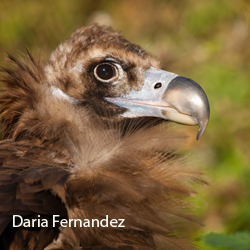Understanding how density dependence modifies demographic parameters in long-lived vertebrates is a challenge for ecologists. Two alternative hypotheses have been used to explain the mechanisms behind density-dependent effects on breeding output: habitat heterogeneity and individual adjustment (also known as interference competition). A number of studies have highlighted the importance of habitat heterogeneity in density dependence in territorial species, but less information exists on demographic processes in colonial species. For these, we expect density-dependent mechanisms to operate at two spatial scales: colony and breeding unit. In this study, long-term data from a recovering population of Cinereous Vultures in southern Spain were used to evaluate environmental and population parameters influencing breeding output. Results suggest that breeding productivity is subject to density-dependent processes at the colony and the nest site scale and is best explained by interference competition. Factors intrinsic to each colony, as well as environmental constraints linked to physiography and human presence, also play a role in regulatory processes. The existence of a trade-off between the disadvantages of nesting too close to conspecifics and the benefits of coloniality was detected. This trade-off may play a role in defining colony structure and may hold true for other colonial breeding bird species. Findings also have important management implications for the conservation of this threatened species. informacion[at]ebd.csic.es: Fernández-Bellon et al (2016) Density-dependent productivity in a colonial vulture at two spatial scales. Ecology 97: 406–416. doi:10.1890/15-0357.1


 Las altas temperaturas están provocando que las lagunas y las marismas de Doñana pierdan agua rápidamente
Las altas temperaturas están provocando que las lagunas y las marismas de Doñana pierdan agua rápidamente




